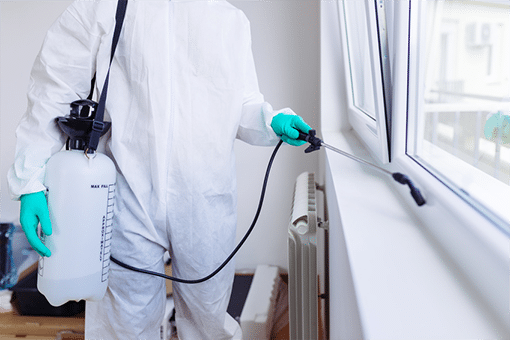Comprehensive Pest Control Services: Keep Your Residential Property Pest-Free!
Comprehensive Pest Control Services: Keep Your Residential Property Pest-Free!
Blog Article
Specialist Insect Control Techniques for Long-Term Outcomes
In the realm of pest control, accomplishing sustained effectiveness and long-term outcomes requires a careful approach that goes beyond mere extermination. Specialist insect control strategies encapsulate a thorough technique that starts with a comprehensive examination and assessment, complied with by precise insect recognition to understand their habits patterns. The execution of Integrated Insect Administration (IPM) concepts, coupled with eco-conscious treatments, creates the cornerstone of sustainable bug eradication. Nevertheless, the real examination depends on the continuous surveillance and upkeep of the treated areas, making sure a pest-free setting for the foreseeable future. By diving right into the intricacies of these techniques, a much deeper understanding of specialist pest control techniques for withstanding end results arises.
Assessment and Evaluation
Upon going into a building for bug control solutions, the preliminary step is a comprehensive inspection and evaluation to identify the level of the invasion and figure out the most effective therapy strategy. Professional pest control technicians are educated to thoroughly analyze the premises, seeking indicators of insect activity such as droppings, munch marks, nests, or any type of structural damages. They will also examine the conditions that might be drawing in pests, such as food resources, water leaks, or access points.

Pest Identification and Habits

In addition, recognizing the habits of the identified pest is key to applying reliable control procedures. For instance, knowing where parasites nest, what they eat, and their activity patterns can help pest control specialists create techniques to eradicate them successfully. Some insects may be nighttime, while others are much more energetic during the day. This understanding permits for the application of treatments at optimum times for maximum performance.
Integrated Bug Management (IPM)
Integrated Bug Management (IPM) techniques incorporate multiple methods to regulate and avoid parasite infestations in a sustainable and eco-friendly way. Pest control Washington DC. By incorporating methods such as biological control, environment adjustment, modification of cultural methods, and the usage of immune varieties, IPM aims to reduce the usage of chemical pesticides
Among the key principles of IPM is the emphasis on prevention. This positive technique entails surveillance pest populations frequently to identify any potential issues before they intensify. By determining bug issues early on, pest control measures can be implemented swiftly and efficiently.
Additionally, IPM promotes making use of non-toxic insect control techniques whenever possible. This can include employing natural predators of the pests, presenting beneficial pests, or making use of scents informative post to interfere with breeding patterns. By minimizing reliance on chemical pesticides, IPM not only protects the environment yet additionally aids preserve a balance in the ecological community.
Environmentally-Friendly Therapies
Implementing eco-conscious techniques in bug control procedures can properly address infestations while focusing on ecological sustainability. Environmentally-friendly treatments focus on decreasing the influence of bug control techniques on ecosystems, non-target microorganisms, and human health and wellness. These techniques frequently involve using ant infestation natural predators, such as ladybugs or nematodes, to regulate pest populations, reducing the demand for chemical interventions. Additionally, strategies like habitat adjustment, such as changing moisture degrees or eliminating food resources, can assist deter parasites without making use of harmful materials.
Another trick aspect of environmentally-friendly treatments is using organic and eco-friendly products that break down promptly without leaving hazardous deposits in the environment. Herb pesticides stemmed from plants like chrysanthemums or neem provide reliable pest control while presenting marginal risk to non-target types. Employing techniques like warm therapies or scent catches can target specific pests with precision, minimizing the general ecological influence of parasite control practices.
Ongoing Monitoring and Maintenance
Routine assessments by experienced professionals are necessary to identify any kind of indications of insect task, examine the effectiveness of previous therapies, and make modifications visit homepage to the pest control strategy as needed. By monitoring parasite populations over time, parasite control professionals can track fads, expect potential problems, and implement preventative steps to decrease the risk of future problems.
Along with surveillance, upkeep practices are important for long-lasting parasite control success. This consists of executing appropriate cleanliness actions to eliminate potential food and water sources for insects, sealing entrance indicate avoid bugs from getting in the properties, and addressing any structural issues that could help with bug invasions (bed bug heat treatment). By integrating continuous tracking and maintenance into an integrated pest management strategy, businesses can ensure a pest-free environment and guard their residential or commercial property against pricey damages and wellness dangers
Final Thought
In conclusion, utilizing professional parasite control strategies such as complete assessment and evaluation, accurate pest recognition and understanding of their habits, integrated pest monitoring methods, environmentally-friendly treatments, and ongoing surveillance and upkeep are important for achieving lasting results in pest control. By applying these techniques, individuals can properly handle pest problems and preserve a pest-free environment in a lasting manner.
Report this page